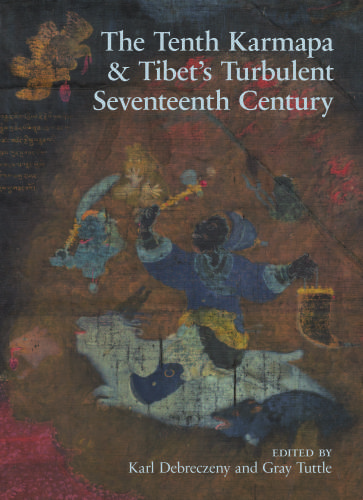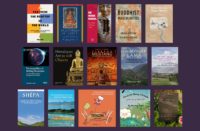
Published in June 2016 by Serindia, “The Tenth Karmapa & Tibet’s Turbulent Seventeenth Century” by Karl Debreczeny and Gray Tuttle (eds.), brings together specialists in literature, history, religion, and art to discuss the historical context of the Tenth Karmapa (1604-1674).
From the Serindia website:
The Tenth Karmapa Chöying Dorjé (1604–1674) was both a famous artist and leader of the Karma Kagyu School of Tibetan Buddhism during a formative period in Tibetan history. The religious and institutional shape of modern Tibet was decided in the turbulent conflicts and dramatic reorganization of Tibetan society in the seventeenth century. With Mongol support, the Fifth Dalai Lama took control of Central Tibet and projected Gelukpa power far beyond Lhasa. As is often seen in the writing of history, the victor exerts its authority in its telling. Thus the preceding ruling polity and its leading lama, the Tenth Karmapa, have often been neglected. Chöying Dorjé’s life is well documented in Tibetan sources which provide an alternative historical narrative of the tumultuous seventeenth century.
Buy the book on Amazon here: http://amzn.to/2aUuP5K





Follow Us!